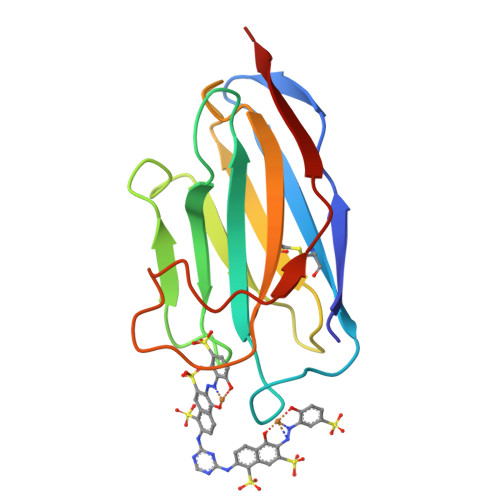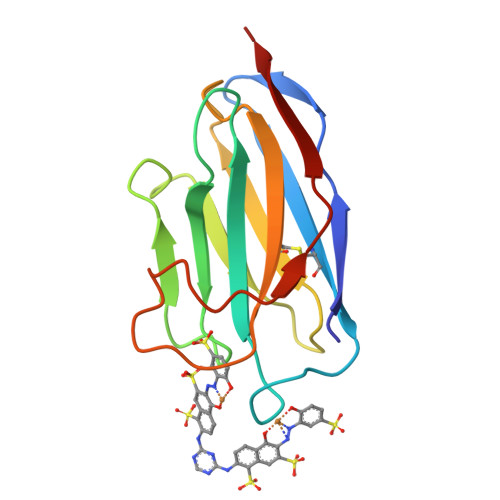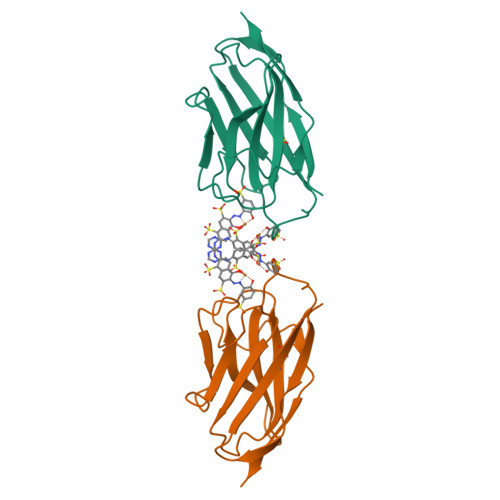Camelid heavy-chain variable domains provide efficient combining sites to haptens.
Spinelli, S., Frenken, L.G., Hermans, P., Verrips, T., Brown, K., Tegoni, M., Cambillau, C.(2000) Biochemistry 39: 1217-1222
- PubMed: 10684599
- DOI: https://doi.org/10.1021/bi991830w
- Primary Citation of Related Structures:
1QD0 - PubMed Abstract:
Camelids can produce antibodies devoid of light chains and CH1 domains (Hamers-Casterman, C. et al. (1993) Nature 363, 446-448). Camelid heavy-chain variable domains (VHH) have high affinities for protein antigens and the structures of two of these complexes have been determined (Desmyter, A. et al. (1996) Nature Struc. Biol. 3, 803-811; Decanniere, K. et al. (1999) Structure 7, 361-370). However, the small size of these VHHs and their monomeric nature bring into question their capacity to bind haptens. Here, we have successfully raised llama antibodies against the hapten azo-dye Reactive Red (RR6) and determined the crystal structure of the complex between a dimer of this hapten and a VHH fragment. The surface of interaction between the VHH and the dimeric hapten is large, with an area of ca. 300 A(2); this correlates well with the low-dissociation constant of 22 nM measured for the monomer. The VHH fragment provides an efficient combining site to the RR6, using its three CDR loops. In particular, CDR1 provides a strong interaction to the hapten through two histidine residues bound to its copper atoms. VHH fragments might, therefore, prove to be valuable tools for selecting, removing, or capturing haptens. They are likely to play a role in biotechnology extending beyond protein recognition alone.
Organizational Affiliation:
Architecture et Fonction des Macromolecules Biologiques, CNRS, UPR-9039, 31 Chemiin Joseph Aiguier, 13402 Marseille Cedex 20, France.



















